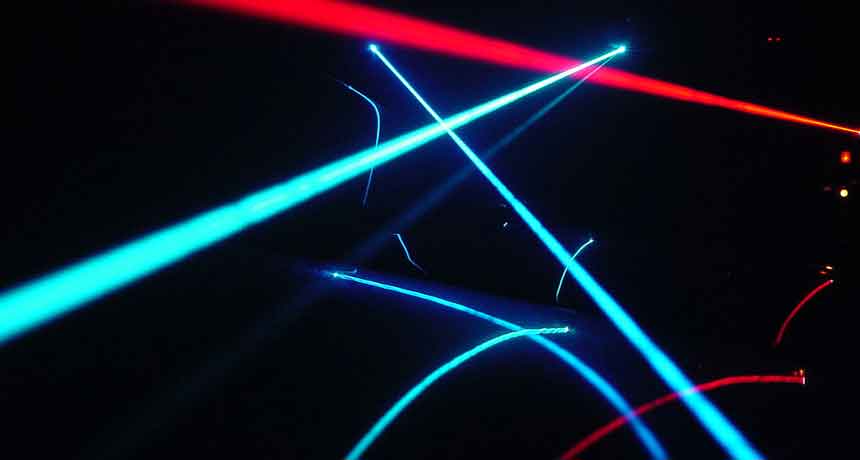Sometimes light is not so fast
Light-speed pulses can slow down, even in a vacuum

Nothing travels faster than light in a vacuum. But new experiments show that the speed of light is more of a maximum than a constant.
JEFF KEYZER/FLICKR (CC BY-SA 2.0)
The speed of light is often called a “constant.” New experiments show that may not be true, even within a vacuum. Sometimes, light slows a bit.
The new research is “very impressive work,” Robert Boyd told Science News. An optical physicist at the University of Rochester in New York, he did not work on the study. He says of the new finding: “It’s the sort of thing that’s so obvious, you wonder why you didn’t think of it first.”
Light travels as particles and as waves. Photons are the name given to those particles that represent the smallest possible amount of light. At their fastest, photons travel nearly 300 million meters (almost 1 billion feet) in a single second. That’s fast enough to get to the moon and back in about 2.6 seconds. Scientists had long known, though, that they could slow light photons down by shining them through a material such as glass or water.
Still, light moving through a vacuum has usually been assumed to move at peak speed. That would seem to make sense. After all, a vacuum is a space with nothing in it to slow light down. In a new study, however, scientists show that even racing through a vacuum, light can slow.
So the speed of light is more of a universal speed limit than an absolute rule for how fast photons travel, the new data suggest.
Miles Padgett led the new study. An optical physicist, he works at the University of Glasgow in Scotland. He and his colleagues showed that the key to slowing light is to change the shape of a light wave. Padgett described how they did this in a paper published online January 22 in Science.
His team raced a pair of photons. One traveled unchanged through a cable made from optical fibers. The other passed through a pair of devices that acted like lenses. A lens changes light: It can focus a spread-out beam of light into a point, for instance. The second photon passed through one device that changed the shape of its wave and another that changed it back to its original form.
The first photon won the race. The second photon came in a tiny bit later, several quadrillionths of a second late for every meter of the race. The difference wasn’t huge, but it was enough to measure. Most technology would not pick up such a small change, but it could be important to scientists who study short pulses of light.
“I’m not surprised the effect exists,” Boyd told Science News. “But it’s surprising that the effect is so large and robust.”
Power Words
(for more about Power Words, click here)
lens (in optics) A curved piece of transparent material (such as glass) that bends incoming light in such a way as to focus it at a particular point in space. Or something, such as gravity, that can mimic some of the light bending attributes of a physical lens.
optical Having to do with vision or sight, with the fields of optics, or with visible light.
optical fiber A long strand of glass or some other fiber used to transmit light signals (such as those used to send telephone, television and other communications signals).
optics Having to do with vision or what can be seen
photon A particle representing the smallest possible amount of light or other electromagnetic radiation.
physicist A scientist who studies the nature and properties of matter and energy (including light).
speed of light A constant often used in physics, corresponding to 1080 million kilometers (671 million miles) per hour.
technology The application of scientific knowledge for practical purposes, especially in industry — or the devices, processes and systems that result from those efforts.
vacuum Space with little or no matter in it. Laboratories or manufacturing plants may use vacuum equipment to pump out air.
wave A disturbance or variation that travels through space and matter in a regular, oscillating fashion.







